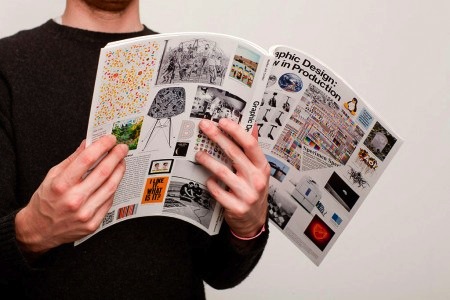Core77 Design Awards: Graphic Design: Now in Production Catalogue, Professional Winner for Visual Communication
Posted in: Core77 Design Awards![]()
Over the next few weeks we will be highlighting award-winning projects and ideas from this year’s Core77 Design Awards 2012! For full details on the project, jury commenting and more information about the awards program, go to Core77DesignAwards.com

Graphic Design: Now in Production Catalogue
Designer: Walker Art Center Design Studio
Location: Minneapolis, USA
Category: Visual Communication
Award: Professional Winner
When the Walker Art Center opened its Graphic Design: Now in Production exhibition they faced the task of accompanying it with a catalogue. This year’s winner for Visual Communication is a great example of an inner-company project that set the bar high for itself. Part operating manual, part academic reader, and part sourcebook, the catalogue freely mixes writing styles, from personal rants to the collective speak of Wikipedia, touching upon hundreds of topics.
This catalogue accompanies the exhibition “Graphic Design: Now in Production” and surveys the vibrant landscape of graphic designers who have seized the means of production and are rewriting the nature of contemporary design practice.

What’s the latest news or development with your project?
We sold out of the initial run of copies in the first four months and have since reprinted it. The exhibition it accompanies is currently on view in New York on Governor’s Island, and will soon travel to Los Angeles, Grand Rapids, Houston, Winston-Salem and Providence. We will be trying to understand what it means for an “of the moment” exhibition to travel for such an extended amount of time. We might possibly update this catalogue in the future.

What is one quick anecdote about your project?
We traveled to Niles, Michigan and visited the French Paper Company mill to witness our paper being made. We had them cut the paper in the opposite grain direction than usual, to make sure that the book was as floppy as possible. In the first run of the book, Abake’s I am Still Alive—a 16-page “parasite publication” that only exists within the pages of other publications—was the only signature run in the opposite grain.
What was an “a-ha” moment from this project?
When we were looking for a unique layout style that would allow us to incorporate the sheer amount of disparate information (long texts, pull quotes, factoids, wikipedia excerpts, bios, descriptions, captions), we realized that the answer was staring us in the face. The salon-style bits approach we landed on is something we have been experimenting with for a couple years now, first for an advertising campaign for a new permanent collection exhibition, and second for a poster for a design lecture series. Then the inevitable groan, remembering that each salon-style composition in the past had taken hours of painstaking design—how would we do this over hundreds of pages?




























 A class in signalling and wireless telegraphy at the Melbourne Technical College. See
A class in signalling and wireless telegraphy at the Melbourne Technical College. See